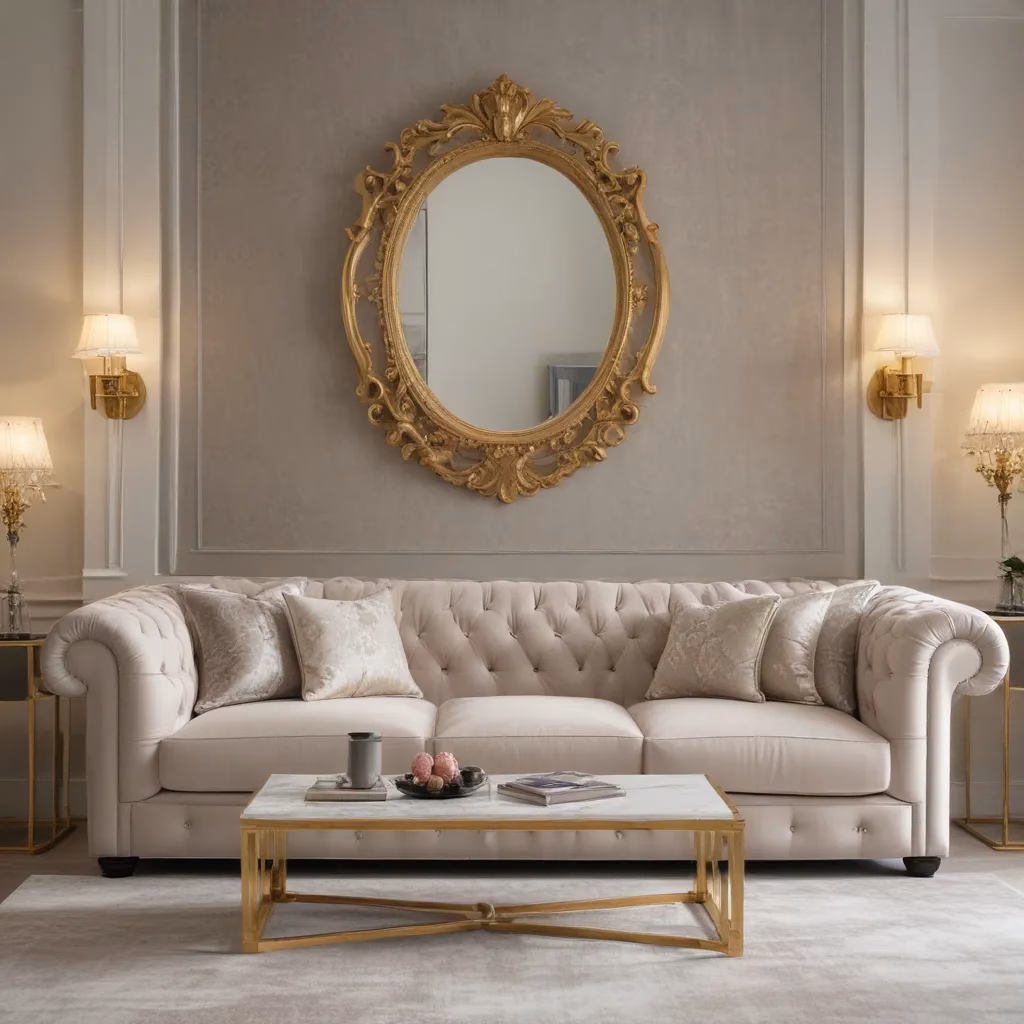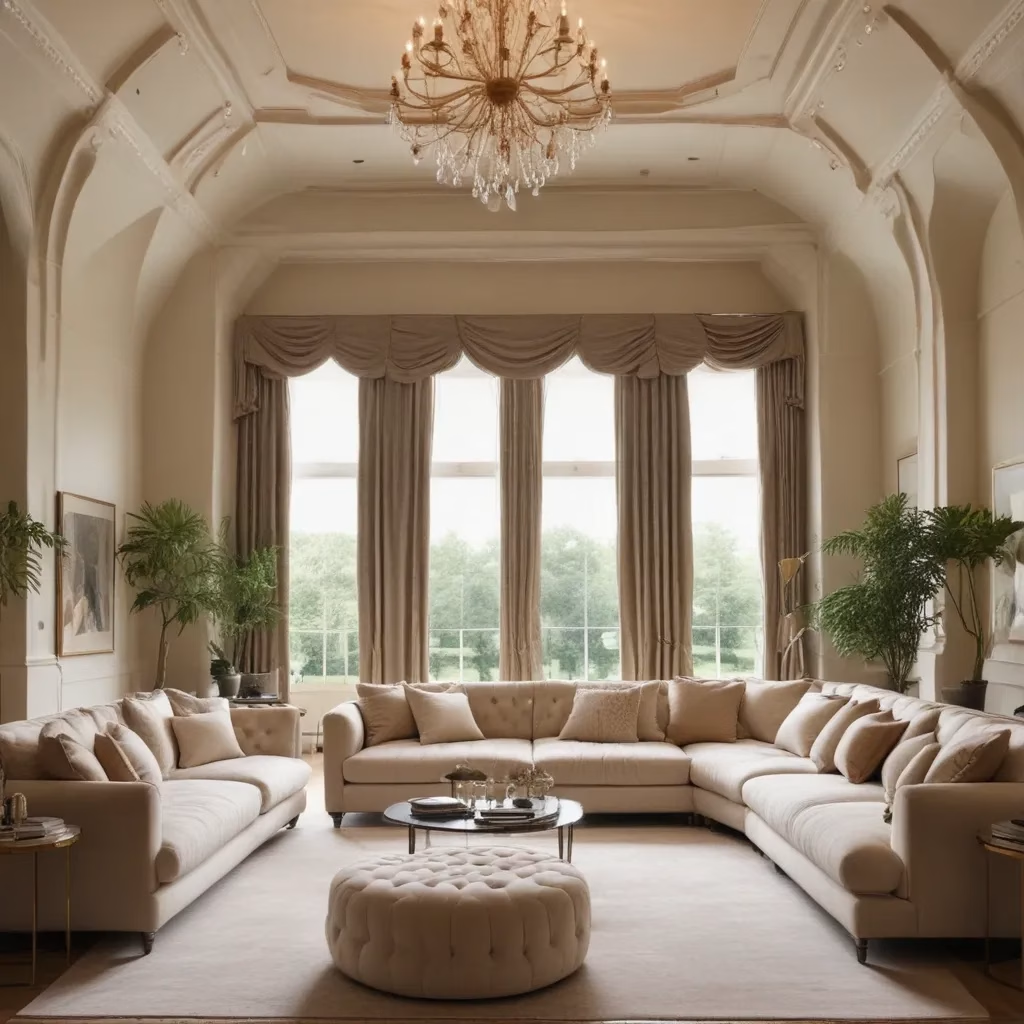
The Art of Sofa Selection: A Personal Journey
As a furniture specialist with years of experience, I’ve seen firsthand how a well-chosen sofa can transform a living space. It’s not just about picking a comfortable seat; it’s about finding the centerpiece that ties your entire room together. Let me share some insights from my personal journey in the world of sofa selection.
When I first started in this industry, I made the mistake of focusing solely on aesthetics. I’d recommend sofas based on their visual appeal without considering the practical aspects. It didn’t take long for me to realize that this approach led to dissatisfied clients and short-lived furniture pieces.
Now, I always start by asking my clients about their lifestyle. Do they have pets? Children? Do they enjoy hosting movie nights or formal dinners? These questions help me understand not just what they want their sofa to look like, but how it needs to function in their daily lives.
One particular case stands out in my memory. A young couple came to me, excited about their new apartment. They wanted a sleek, modern sofa in white leather. It looked stunning in their space, but within months, they were back, frustrated with how quickly it showed wear and tear. This experience taught me the importance of balancing style with practicality.
Understanding Upholstery: More Than Just Fabric
Upholstery is the unsung hero of furniture. It’s not just about the color or pattern; the type of fabric you choose can make or break your sofa experience. Let’s delve into some key considerations:
Durability vs. Comfort
In my early days, I often found myself recommending highly durable fabrics like tweed or canvas for families with young children. While these fabrics stand up well to wear and tear, they’re not always the most comfortable for lounging.
Over time, I’ve learned to recommend performance fabrics that offer both durability and comfort. These innovative materials resist stains and wear while remaining soft and inviting. It’s a game-changer for households that want to balance practicality with comfort.
Natural vs. Synthetic Fibers
There’s a common misconception that natural fibers are always superior. While I love the look and feel of linen or cotton upholstery, they’re not always the best choice for every situation.
Synthetic fibers have come a long way. Modern polyester blends can mimic the look of natural fabrics while offering superior stain resistance and durability. I often recommend these for high-traffic areas or homes with pets.
Color and Pattern Considerations
Choosing the right color and pattern for your sofa upholstery is about more than just matching your decor. It’s about creating a timeless piece that can adapt as your style evolves.
I always advise clients to consider their long-term plans. A bold pattern might seem exciting now, but will you still love it in five years? Neutral colors offer more flexibility, allowing you to change your room’s look with accessories and accent pieces.
The Anatomy of a Quality Sofa
When it comes to sofas, what’s inside counts just as much as what’s on the outside. Let’s break down the key components that make up a quality sofa:
Frame Construction
The frame is the skeleton of your sofa, and its quality can determine how long your sofa will last. In my experience, hardwood frames, particularly those made from kiln-dried oak, maple, or beech, offer the best durability.
I once visited a furniture factory and watched the frame-building process. The attention to detail was impressive – joints were not just glued but also screwed and corner-blocked for extra stability. This level of craftsmanship is what separates a sofa that lasts for decades from one that sags after a few years.
Suspension Systems
The suspension is what gives your sofa its bounce and comfort. There are several types, each with its pros and cons:
| Suspension Type | Pros | Cons |
|---|---|---|
| Eight-way hand-tied springs | Excellent support and durability | Expensive |
| Sinuous springs | Good support, less expensive | Can sag over time |
| Web suspension | Affordable, works well for tight backs | Less durable than spring systems |
Personally, I’m a fan of the eight-way hand-tied springs for their longevity and comfort, but I understand they’re not always within everyone’s budget. Sinuous springs can be a great middle-ground option.
Cushion Fillings
The filling of your cushions plays a huge role in both comfort and maintenance. Here’s a quick rundown of common options:
- High-resilience foam: Offers a firm seat and keeps its shape well.
- Down: Luxuriously soft but requires frequent fluffing.
- Foam and fiber wrap: A good balance of comfort and low maintenance.
- Memory foam: Conforms to your body but can retain heat.
I often recommend a combination of materials. For example, a core of high-resilience foam wrapped in a layer of softer foam or fiber can provide both support and comfort.
Sofa Styles: Finding Your Perfect Match
Choosing the right style of sofa can be overwhelming with so many options available. Let me walk you through some popular styles and when they work best:
Chesterfield: Timeless Elegance
The Chesterfield sofa, with its distinctive tufted back and rolled arms, has been a symbol of elegance for centuries. I love recommending this style for formal living rooms or studies. Its classic look pairs well with both traditional and modern decor, making it a versatile choice.
However, be aware that the deep buttoning can collect dust and make cleaning a bit more challenging. I always advise clients who choose a Chesterfield to invest in a good handheld vacuum for regular maintenance.
Sectional: Flexibility and Comfort
Sectional sofas have become increasingly popular, and for good reason. They offer unparalleled flexibility in seating arrangements. I’ve seen sectionals work wonders in open-plan living spaces, providing clear definition between areas without the need for walls.
One of my favorite projects involved a large family room where we used a U-shaped sectional to create a cozy conversation pit. The key is to ensure you have enough space – a sectional can overwhelm a small room.
Mid-Century Modern: Clean Lines and Functionality
For those who appreciate minimalist design, mid-century modern sofas are an excellent choice. Characterized by clean lines, tapered legs, and minimalist cushions, these sofas can make a small space feel larger and more open.
I once worked with a client who was downsizing from a large house to a city apartment. We chose a sleek mid-century style sofa that perfectly complemented the urban vibe of their new space without sacrificing comfort.
Maintaining Your Sofa: Tips from the Trenches
Proper maintenance can significantly extend the life of your sofa. Here are some tips I’ve gathered over the years:
Regular Cleaning
- Vacuum weekly: Use the upholstery attachment to remove dust and debris from the surface and crevices.
- Rotate cushions: This ensures even wear and prevents sagging.
- Spot clean promptly: Address spills immediately to prevent staining.
Professional Cleaning
I recommend professional cleaning every 12-18 months, depending on usage. This deep clean can revitalize your sofa and remove deep-set dirt and allergens.
Protecting Your Investment
Consider using arm covers or throws on high-wear areas. For leather sofas, regular conditioning can prevent cracking and extend the life of the material.
The Future of Sofa Design: Trends and Innovations
The world of sofa design is constantly evolving. Here are some exciting trends I’m seeing:
Sustainable Materials
There’s a growing demand for eco-friendly furniture. I’m seeing more sofas made with recycled fabrics, sustainably sourced wood, and even innovative materials like bamboo or cork.
Smart Sofas
Technology is making its way into our sofas. From built-in USB chargers to app-controlled reclining functions, smart sofas are becoming more common. While I appreciate the convenience, I always remind clients to consider how these features might affect the longevity of the piece.
Modular Designs
Flexibility is key in modern homes. Modular sofas that can be rearranged to suit different needs are gaining popularity. I recently worked on a project where we used a modular system to create different seating arrangements for various events – from intimate gatherings to large parties.
Bringing It All Together: Creating Your Perfect Living Space
Selecting the right sofa is just one part of creating a cohesive living space. Here are some final thoughts on how to tie everything together:
Consider Scale and Proportion
A common mistake I see is choosing a sofa that’s too large or small for the room. Always measure your space and consider the scale of other furniture pieces. A well-proportioned room feels balanced and harmonious.
Create a Focal Point
Your sofa can be the star of the show or play a supporting role. If you have a statement piece of art or a beautiful view, consider a more neutral sofa that doesn’t compete for attention.
Don’t Forget About Lighting
Proper lighting can enhance the beauty of your sofa and create the right ambiance. I always recommend a mix of ambient, task, and accent lighting to create a layered, inviting atmosphere.
In conclusion, choosing and maintaining the perfect sofa is a journey that requires thoughtful consideration of your lifestyle, space, and personal style. By taking the time to understand your needs and exploring your options, you can create a living space that’s both beautiful and functional.
Remember, your sofa is more than just a piece of furniture – it’s where memories are made, where you relax after a long day, and where you welcome friends and family. Choose wisely, and it will serve you well for years to come.
For more expert advice and a wide selection of quality sofas, visit Sofa Spectacular. We’re here to help you find the perfect centerpiece for your dream living space.



